The Uruguayan flag represents the nation’s collective consciousness and cultural richness. It embodies historical depth and democratic values, serving as a testament to Uruguay’s journey and societal ethos to capture the essence of Uruguay’s communal bonds and its commitment to progress and inclusivity.
Uruguay Flag
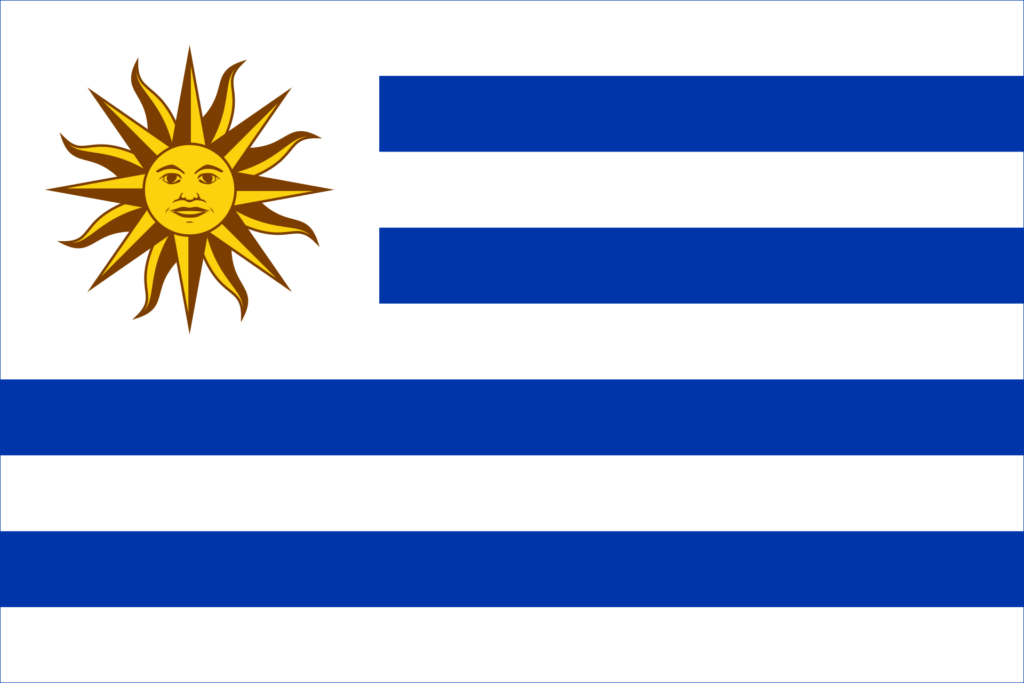
The flag of Uruguay features nine horizontal stripes and a white canton bearing the golden Sun of May. These stripes represent the nation’s original nine departments, while the Sun of May symbolizes Uruguay’s journey towards independence and its commitment to democratic ideals.
This design, blending historical importance with representing the country’s unity and progression, establishes the flag as a symbol respected both within Uruguay and internationally.
Uruguay Flag: Color Palette
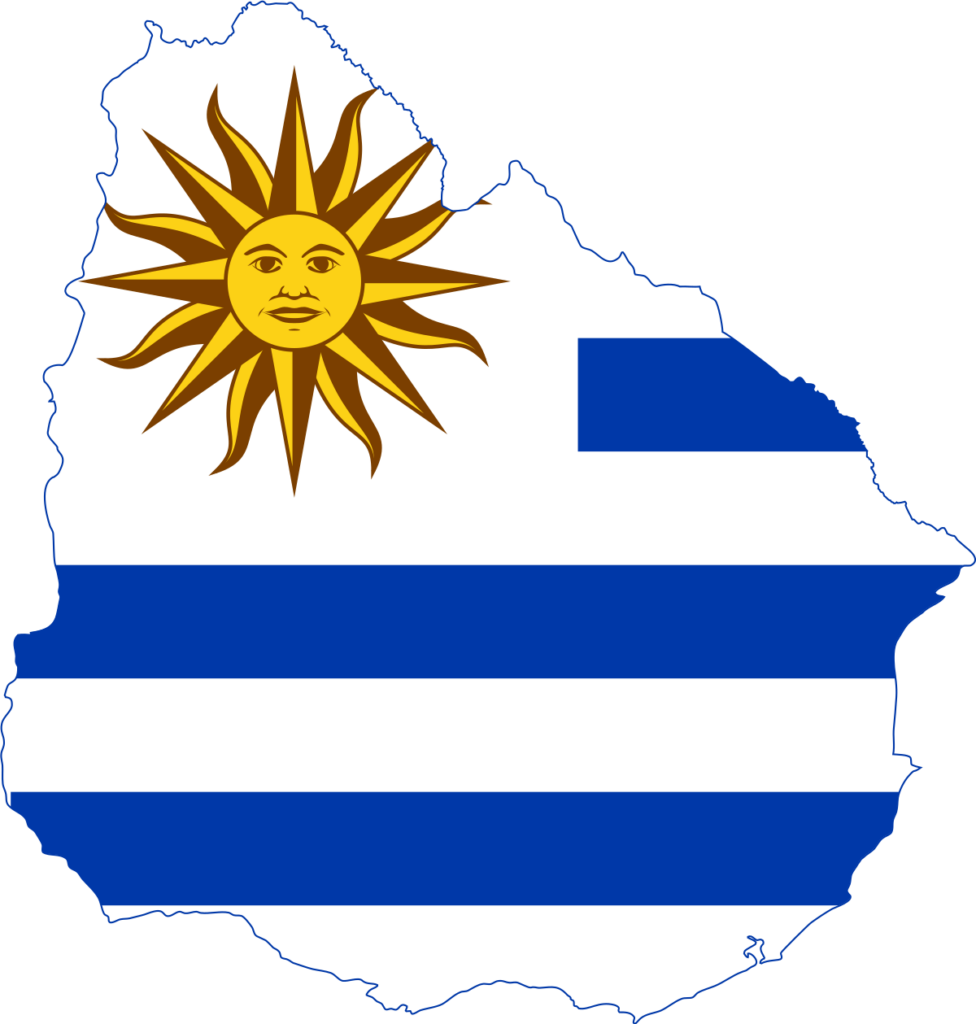
Uruguay Flag Emoji: 🇺🇾
The color palette of the Uruguayan flag is a thoughtfully curated combination, each hue holding its significance and contributing to the overall symbolism of the emblem. This selection of colors enhances the flag’s visual appeal and carries more profound meanings, each color unfolding its unique story and connection to Uruguay’s identity and values.
Meaning of Each Color
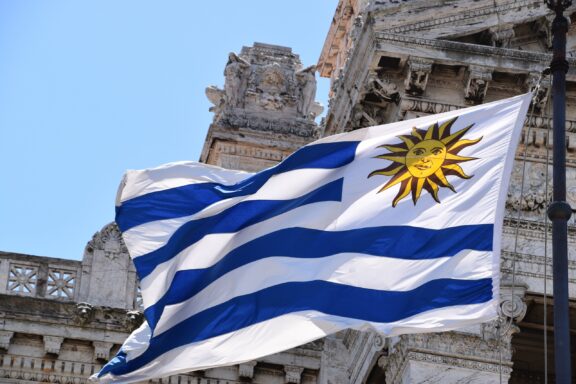
Blue
The blue stripes on the Uruguayan flag are derived from the flag of Argentina, a neighboring nation with a shared history in the struggle for independence.
In the context of Uruguay’s flag, these blue stripes serve as a reminder of the country’s administrative divisions – the original nine departments – signifying unity and the nation’s political foundation.
White
White, featured in the alternating stripes, traditionally symbolizes peace and honesty. In Uruguay’s flag, the white stripes complement the blue, creating a visual balance and emphasizing the nation’s dedication to peace and integrity.
Besides their aesthetic appeal, including white stripes reinforces the themes of harmony and transparent governance.
Gold (Sun of May)
The Sun of May, depicted in gold, is a central symbol in Uruguay’s flag. This emblem represents the May Revolution of 1810, which marked the beginning of the independence movement in the Rio de la Plata region.
The sun also symbolizes Inti, the Incan sun god, linking Uruguay’s heritage to its pre-Columbian past. The gold color of the sun, often associated with wealth and prosperity, reflects Uruguay’s aspirations for a prosperous future.
Uruguay Coat of Arms
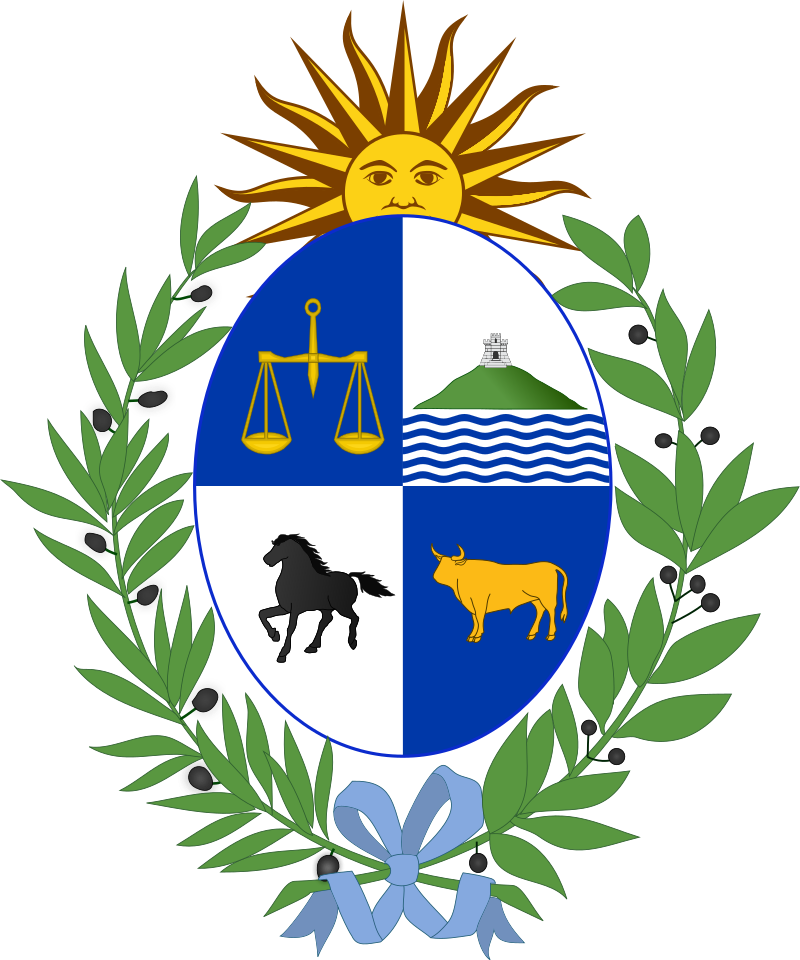
The Coat of Arms of Uruguay encapsulates the spirit of the nation, melding symbols of equality, justice, strength, and freedom. It reflects the country’s rich history, from its roots in democratic values, symbolized by the golden scale, to its resilience and strategic importance, echoed in Montevideo Hill’s fortress.
The galloping black horse and golden ox illustrate Uruguay’s independent soul and agricultural prosperity. Enveloped by laurel and olive branches, the Coat of Arms is a testament to Uruguay’s triumphs, peaceful aspirations, and commitment to a harmonious and prosperous future.
Historical Evolution and the Meaning Behind Changes
The flag of Uruguay, established in 1828, originally featured nine light blue stripes, representing the country’s nine original departments and reflecting its ties with Argentina. In 1830, the design was simplified to four stripes for better visibility, symbolizing a maturing national identity.
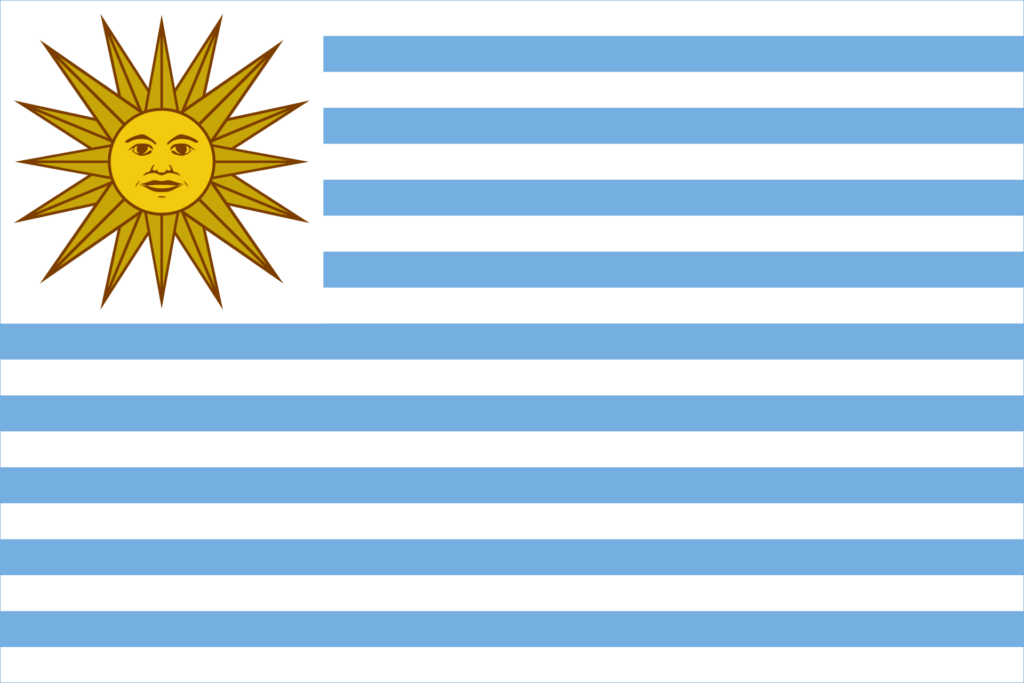
The Sun of May, a consistent element, symbolizes the May Revolution of 1810 and Uruguay’s aspirations for freedom. These changes in the flag’s design mirror Uruguay’s evolving character and historical journey, encapsulating its independence, administrative evolution, and enduring democratic values.
Today, the flag of Uruguay stands as a proud emblem of the nation’s enduring spirit, representing its rich history, cultural unity, and unwavering commitment to democratic ideals in the modern era.
Overall Symbolic Meaning of the Flag

The flag of Uruguay symbolizes the nation’s harmonious blend of historical legacy and forward-looking aspirations. It embodies the country’s unity, resilience, and democratic spirit, encapsulating Uruguay’s unique identity and ongoing narrative of progress and hope.
Similar Flags to the Flag of Uruguay
Several flags worldwide resemble Uruguay’s, each sharing unique historical and design parallels. Here are the top flags that mirror the look of Uruguay’s national emblem
Argentina
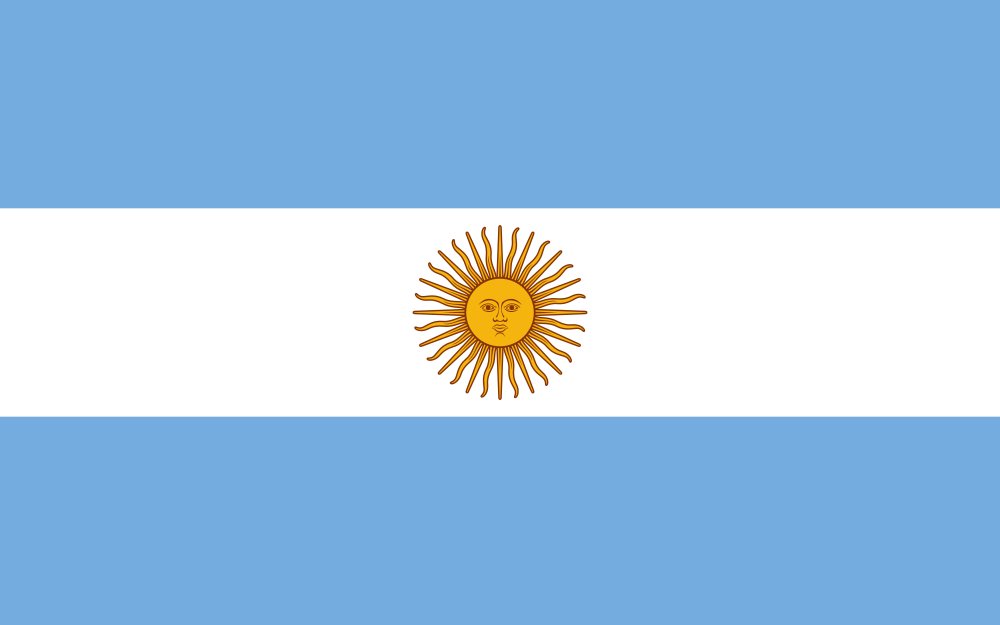
The most striking resemblance is with the flag of Argentina. Both feature blue and white stripes and the Sun of May. This similarity is rooted in their shared history in the Rio de la Plata region and the pivotal May Revolution of 1810, which was instrumental in their paths to independence.
Greece
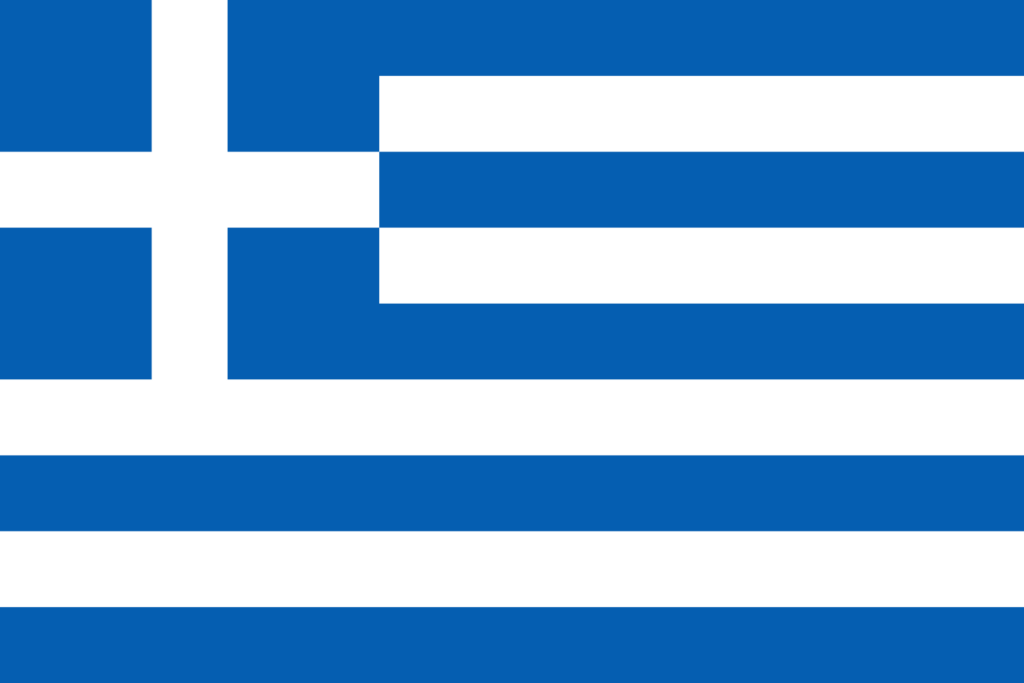
With its blue and white stripes, Greece’s flag is similar to Uruguay’s flag. Although the resemblance is coincidental, it highlights a common aesthetic preference in flag design across different cultures.
El Salvador
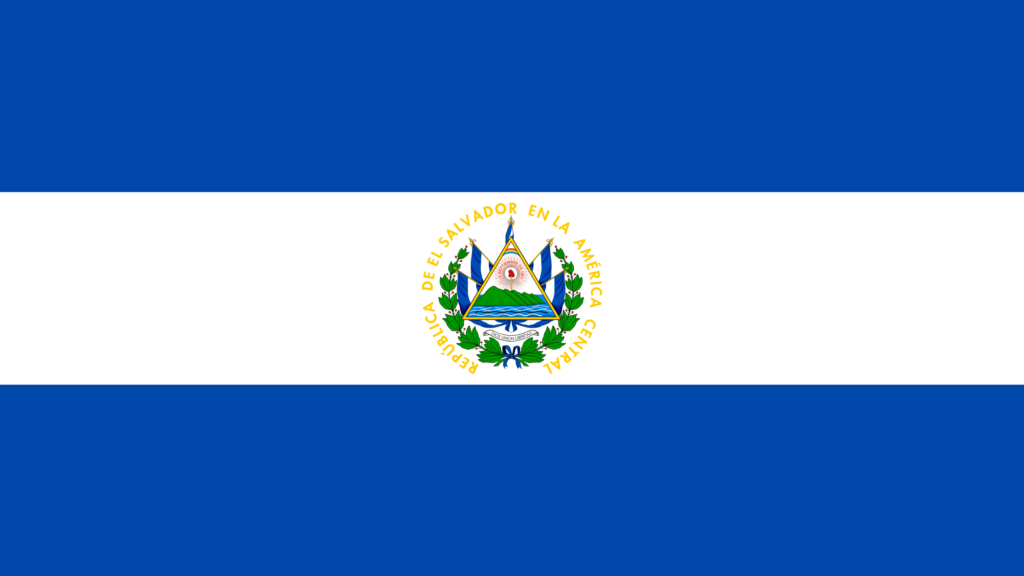
El Salvador’s flag also incorporates blue and white stripes, similar to Uruguay’s. This design reflects a common thematic choice in the Americas, where these colors often symbolize ideals such as liberty and peace, elements central to the national stories of both countries.
Conclusion
The flag of Uruguay embodies a rich tapestry of meanings, resonating deeply with its citizens and marking its distinct place in the global community of flags.
It tells a unique story of the nation’s history, values, and aspirations, symbolizing national pride and unity for Uruguayans and contributing to the diverse and colorful world of national emblems.